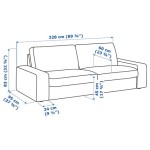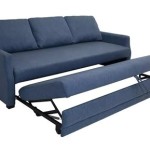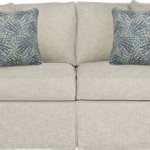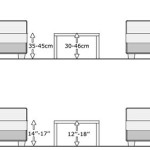How To Protect Sofas From Cats
Protecting sofas from the destructive tendencies of cats is a common concern for cat owners. Cats, by nature, are driven to scratch, climb, and sometimes mark territories, behaviors that can significantly damage furniture. Understanding these motivations and employing preventive strategies are crucial for maintaining sofa integrity and ensuring feline well-being.
The scratching behavior in cats serves multiple purposes. It helps to remove the dead outer layer of their claws, keeping them sharp and healthy. Scratching also allows cats to stretch their muscles and tendons. Furthermore, cats have scent glands in their paws, and scratching deposits their scent, marking the area as their territory. This behavior is instinctive and nearly impossible to eliminate entirely. The goal, therefore, is to redirect scratching behavior towards more appropriate surfaces.
Climbing is another natural feline behavior. Cats enjoy being in elevated positions, which provides them with a sense of security and a vantage point to observe their surroundings. Sofas often present an appealing climbing surface due to their height and texture. Discouraging climbing can be more challenging than redirecting scratching, but various deterrents and alternative climbing structures can be effective.
Territorial marking, which can involve spraying urine or defecating outside the litter box, is often triggered by stress, anxiety, or perceived threats. While less common than scratching or climbing, territorial marking can cause significant damage and odor issues. Addressing the underlying cause of the marking behavior is crucial for long-term resolution. This might involve consulting with a veterinarian or a certified feline behaviorist.
Choosing the Right Sofa Material
The material of a sofa plays a significant role in its susceptibility to cat damage. Certain materials are more resistant to scratching and tearing than others. Selecting the right material can significantly reduce the likelihood of damage and extend the lifespan of the sofa.
Microfiber, also known as microsuede, is often recommended as a cat-friendly sofa material. This synthetic fabric is tightly woven, making it difficult for cats to penetrate with their claws. The close weave also prevents snags and tears, minimizing visible damage. Microfiber is also relatively easy to clean, a significant advantage for pet owners.
Leather is another option that can be surprisingly durable, although it requires careful consideration. While scratches are still possible on leather, they tend to be superficial and blend in with the natural grain. Leather is also easy to wipe clean. However, certain types of leather, such as very soft or distressed leather, are more prone to scratching and should be avoided. Regularly conditioning leather can help maintain its suppleness and resistance to damage.
Synthetic fabrics like canvas and denim are also reasonably durable and can withstand some scratching. These fabrics are typically less expensive than microfiber or leather, making them a budget-friendly option. However, they may not be as resistant to stains or as easy to clean.
Avoid delicate fabrics like silk, velvet, and linen, as these are easily snagged and torn by cat claws. Loosely woven fabrics are also more susceptible to damage, as the claws can easily get caught in the loops. Consider the fabric's texture and weave when making a selection.
Ultimately, selecting a sofa with a durable, tightly woven material is a proactive step in protecting it from cat damage. While no fabric is completely impervious to scratching, choosing the right material can significantly minimize the extent of the damage.
Providing Alternative Scratching Surfaces
The key to preventing cats from scratching sofas is to provide them with appealing and accessible alternatives. By offering a variety of scratching posts and surfaces, cat owners can redirect their cats' natural scratching behavior away from furniture.
Scratching posts come in various shapes, sizes, and materials. Sisal fabric is a popular choice for scratching posts, as its rough texture mimics the feel of tree bark. Cardboard scratching posts are also widely available and are often a hit with cats. Carpet scratching posts are less desirable, as they can inadvertently encourage cats to scratch carpets elsewhere in the house. Vertical scratching posts are suitable for cats that like to stretch upwards while scratching, while horizontal scratching pads cater to cats that prefer to scratch on a flat surface.
Placement of scratching posts is crucial for their effectiveness. Place them in areas where the cat spends a lot of time, such as near sleeping areas or favorite hangout spots. Placing a scratching post near the sofa that the cat is already scratching can also help redirect the behavior. Multiple scratching posts throughout the house are ideal, ensuring that there is always a scratching outlet readily available.
To make scratching posts more appealing, sprinkle them with catnip. The scent of catnip attracts cats and encourages them to investigate and interact with the post. Positive reinforcement, such as offering treats or praise when the cat uses the scratching post, can also help to reinforce the desired behavior. Consistent encouragement is essential for establishing good scratching habits.
In addition to scratching posts, consider providing other scratching surfaces, such as scratching mats or cardboard scratchers. These options offer variety and can cater to different scratching preferences. Regularly replace worn-out scratching surfaces to maintain their appeal. A damaged or tattered scratching post will lose its effectiveness.
Introducing a new scratching post or surface gradually can increase its acceptance. Place it near the sofa or other areas where the cat is already scratching. Gently guide the cat's paws onto the scratching surface to demonstrate its use. Patience and consistency are key to successfully redirecting scratching behavior.
Using Deterrents and Protective Measures
Employing deterrents and protective measures can further safeguard sofas from cat damage. These strategies aim to discourage cats from scratching, climbing, or marking the sofa while maintaining a comfortable and safe environment for the animal.
Double-sided sticky tape is a common and effective deterrent. Applying strips of the tape to the areas of the sofa that the cat typically scratches creates an unpleasant tactile sensation, discouraging the cat from returning to those areas. Most cats dislike the sticky feeling on their paws and will avoid the treated surfaces. Regularly replace the tape as it loses its stickiness.
Aluminum foil is another deterrent that can be effective for some cats. Cats generally dislike the sound and texture of aluminum foil, making it an undesirable surface to scratch or walk on. Cover the areas of the sofa that the cat is targeting with aluminum foil. Once the cat stops scratching those areas, the foil can be gradually removed.
Commercial cat repellent sprays are available in pet stores. These sprays typically contain ingredients that cats find unpleasant, such as citrus or herbal scents. Spray the sofa with the repellent, following the instructions on the product label. Reapply the spray regularly, as its effectiveness decreases over time. Ensure that the spray is safe for use on the sofa material before applying it.
Sofa covers or throws can provide a physical barrier between the cat and the sofa. Choose durable, washable covers that can withstand scratching and frequent cleaning. Sofa covers can also protect against hair, dirt, and spills, extending the lifespan of the sofa. Consider fitted covers for a more secure and tailored look.
Strategically placed furniture can also help to deter cats from accessing the sofa. Placing a coffee table or other obstacle in front of the sofa can make it less appealing to climb or scratch. Rearranging the furniture layout to create less open space around the sofa can also reduce the cat's inclination to interact with it.
Regular nail trimming is an essential component of preventing sofa damage. Trimming the cat's nails every two to three weeks reduces their sharpness and minimizes the potential for damage. Consult with a veterinarian or groomer for guidance on proper nail trimming techniques. Soft nail caps, which are glued onto the cat's claws, are another option for preventing scratching damage. However, some cats may not tolerate wearing nail caps.
Water spray bottles can be used as a mild deterrent for unwanted behaviors. When the cat starts to scratch the sofa, give a quick spray of water. The sudden, unexpected spray will often interrupt the behavior. Consistency is key, and the cat must associate the spray with the scratching behavior, not with the person administering the spray. Avoid using excessive force or startling the cat. The goal is to discourage the behavior, not to frighten the animal.
6 Best S To Keep Cats From Scratching Furniture In 2024
6 Best S To Keep Cats From Scratching Furniture In 2024

7 Proven Ways To Cat Proof Your Sofa Comfort Works Blog Resources

How To Protect Your Sofa From Cat Scratches Pets Swyft

Protect Your Furniture From Cat Scratches A Thrifty Mom

8 Tips To Cat Proof Your Sofa

How To Protect Furniture From Cats 10 Steps With Pictures

How To Cat Proof Your Couch Petmd

How To Keep Cats From Scratching Furniture Bechewy

How To Protect Leather Furniture From Pets








